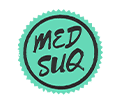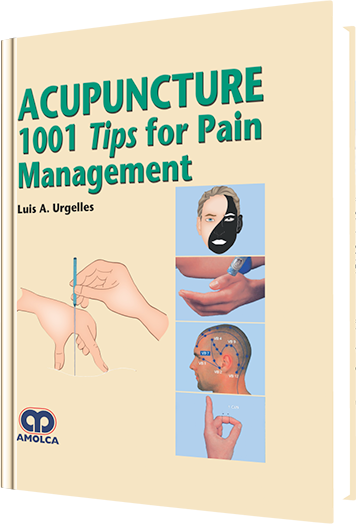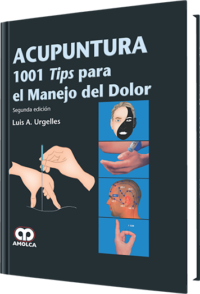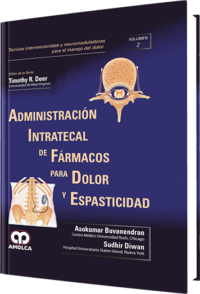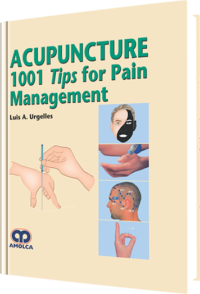“Como resultado de estudios constantes de la investigación en el mundo entero, la acupuntura se puede considerar hoy día como parte completa de la medicina contemporánea. Se ha convertido en una técnica terapéutica de primera clase así como una especialidad real. La acupuntura es una ciencia antigua que ha estado ajustándose a las nuevas culturas y su pensamiento. Desde la época de Marco Polo, la acupuntura ha estado apareciendo de vez en cuando en ciencias médicas y se ha practicado en diversos países. Algunos documentos históricos y libros demuestran que ha estado pasando con períodos de esplendor moderado. La extensión importante más reciente de la Medicina Tradicional China por todo el mundo, ha sido realzada por un deseo especial de volver a la medicina y a los tratamientos naturales con menos o ningunos efectos secundarios adversos. Si pudiéramos interpretar los símbolos y las alegorías de la enseñanza tradicional y expresarlos según nuestro tiempo y cultura – sin la alteración de su sustancia el destino de la extensión más reciente de la medicina tradicional china sería igual al del pasado.”
Part 1.- Introduction
Part 2.- The yang-yin and five elements theories
1. The Yang-Yin Theory.
1.1. “Full Yang” State.
1.2. “Full Yin” State.
1.3. “Empty Yang” State.
1.4. “Empty Yin” State”.
2. The Five Elements Theory.
2.1. Formation Cycle.
2.2. Mother – Child relationship.
2.3. Destruction Cycle.
2.4. Conqueror – conquered relationship.
2.5. Relationship between the Five Elements and the internal organs.
2.6. Hollow organs (Yang) and Solid organs (Yin)
Part 3.- Meridians and Points
3. Acupunture Points.
3.1. Measurements for the location of Acupuncture Points.
3.2. The Meridians and their relation with the energy flow.
4. Anatomical Pathway of the Meridians.
4.1. Lung Meridian (L) (-) YIN.
4.2. Large Intestine Meridian (LI) (+) YANG.
4.3. Stomach Meridian (ST) (+) YANG.
4.4. Spleen Meridian (SP) (-) YIN.
4.5. Heart Meridian (H) (-) YIN.
4.6. Small Intestine Meridian (SI) (+) YANG.
4.7. Bladder Meridian (BL) (+) YANG.
4.8. Kidney Meridian (K) (-) YIN.
4.9. Pericardium Meridian (PC) (-) YIN.
4.10. Triple Burner Meridian (TB) (+) YANG.
4.11. Gall Bladder Meridian (GB) (+) YANG.
4.12. Liver Meridian (LV) (-) YIN.
4.13. Governing Vessel Meridian (GV) (+) YANG.
4.14. Conception Vessel Meridian (CV) (-) YIN.
5. Anatomical location of the Acupuncture points.
5.1. Lung Meridian (L) (-) YIN.
5.2. Large Intestine Meridian (LI) (+) YANG.
5.3. Stomach Meridian (ST) (+) YANG.
5.4. Spleen Meridian (SP) (-) YlN.
5.5. Heart Meridian (H) (-) YIN.
5.6. Small Intestine Meridian (SI) (+) YANG.
5.7. Bladder Meridian (BL) (+) YANG.
5.8. Kidney Meridian (K) (-) YIN.
5.9. Pericardium Meridian (PC) (-) YIN.
5.10. Triple Burner Meridian (TB) (+) YANG5.11. Gall Bladder Meridian (GB) (+) YANG5.12. Liver Meridian (LV) (-) YIN5.13. Governor Vessel Meridian (GV) (+) YANG5.14. Conception Vessel Meridian (CV) (-) YIN5.15. Extraordinary Points
Part 4.- List of the names of the points of acupuncture
6. Names of Acupuncture Points.
6.1. Lung (L).
6.2. Large Intestine (LI).
6.3. Stomach (ST).
6.4. Spleen (SP).
6.5. Heart (H).
6.6. Small Intestine (SI).
6.7. Bladder (BL).
6.8. Kidney (K).
6.9. Pericardium (PC).
6.10. Triple Burner (TB).
6.11. Gall Bladder (GB).
6.12. Liver (LV).
6.13. Governor Vessel (GV).
6.14. Conception Vessel (CV)
Part 5.- Acupuncture Techniques
7. Techniques and Manipulation.
7.1. Acupuncture Techniques.
7.2. The needles.
7.3. Manipulation of the patient
Part 6.- Pain
8. Neurophysiological Mechanisms of Pain.
8.1. Anatomy of the Nervous System.
8.2. Action Potential.
8.3. Pain Pathway.
8.4. Somatic Senses.
8.5. Pain and inflammation.
8.6. Dentistry Pain.
8.7. Referred pain.
8.8. Diffuse pain.
8.9. Radiated pain.
8.10. Phantom pain (Ghost pain).
8.11. Psychogenic pain.
8.12. Trigger Point.
8.13. Acute vs. Chronic Pain.
8.14. Nociceptive and Neuropathic pain.
8.15. Analgesia vs. Anesthesia
Part 7.- Analgesic Mechanisms of Acupuncture
Part 8.- Acupuncture Analgesics in Surgerys
9. Acupuncture Analgesic in Surgery.
10. Acupuncture Analgesic in Experimental Surgery
Part 9.- Acupuncture in oncologya
11. Acupuncture Analgesic in oncology
Part 10.- Therapeutic indications
12. Practical Approaches of PHYPANA and PRM in your daily practic.
12.1. Stem Cell Therapy for Pain.
12.2. Complications.
13. Therapeutic guide.
13.1. Tip: Anxiety.
13.2. Tip: Bronchial asthma.
13.3. Tip: Conjunctivitis.
13.4. Tip: Constipation.
13.5. Tip: Cough.
13.6. Tip: Diarrheas.
13.7. Tip: Epicondylitis.
13.8. Tip: Enuresis.
13.9. Tip: Epilepsy.
13.10. Tip: Facial paralysis.
13.11. Tip: Fatigue / Fibromyalgia.
13.12. Tip: FLU / Cold.
13.13. Tip: Hypertension.
13.14. Tip: Insomnia.
13.15. Tip: Knee (Osteoarthritis).
13.16. Tip: Leukopenia.
13.17. Tip: Low back pain and ischialgia.
13.18. Tip: Migraine.
13.19. Tip: Obesity.
13.20. Tip: Osteoarthritis (Cervical).
13.21. Tip: Palliative care:.
13.22. Tip: PMS.
13.23. Tip: Rhinitis.
13.24. Tip: Shoulder Pain.
13.25. Tip: Smoking.
13.26. Tip: Stress.
13.27. Tip: Temporomandibular Joint Disorder (TMJ).
13.28. Tip: Thoracic Osteoarthritis.
13.29. Tip: Tonsillitis (Chronic).
13.30. Tip: Tooth ache.
13.31. Tip: Torticollis (Wryneck).
13.32. Tip: Trigeminal Neuralgia.
13.33. Tip: Vomit.
13.34. Acupuncture in Surgical procedure

